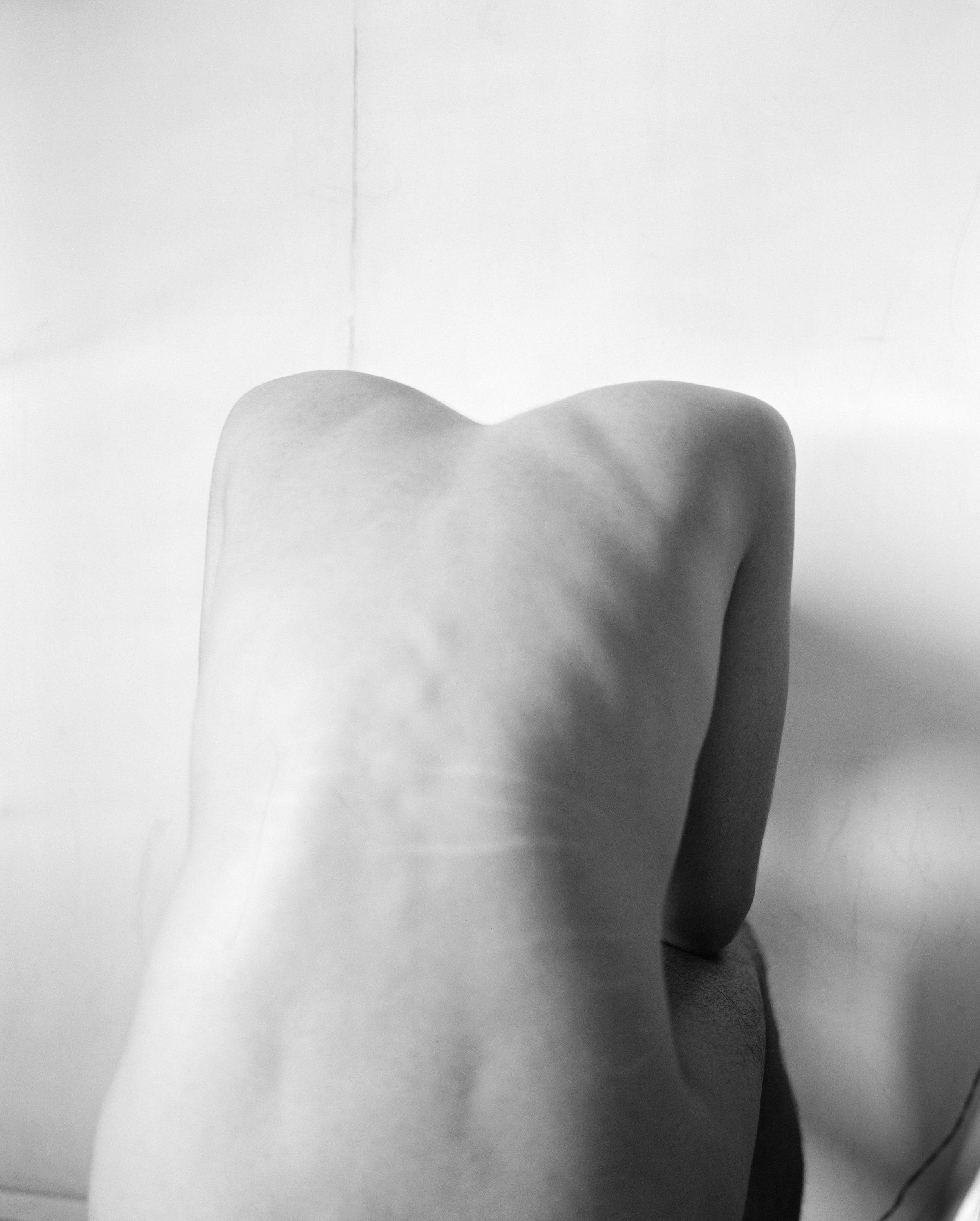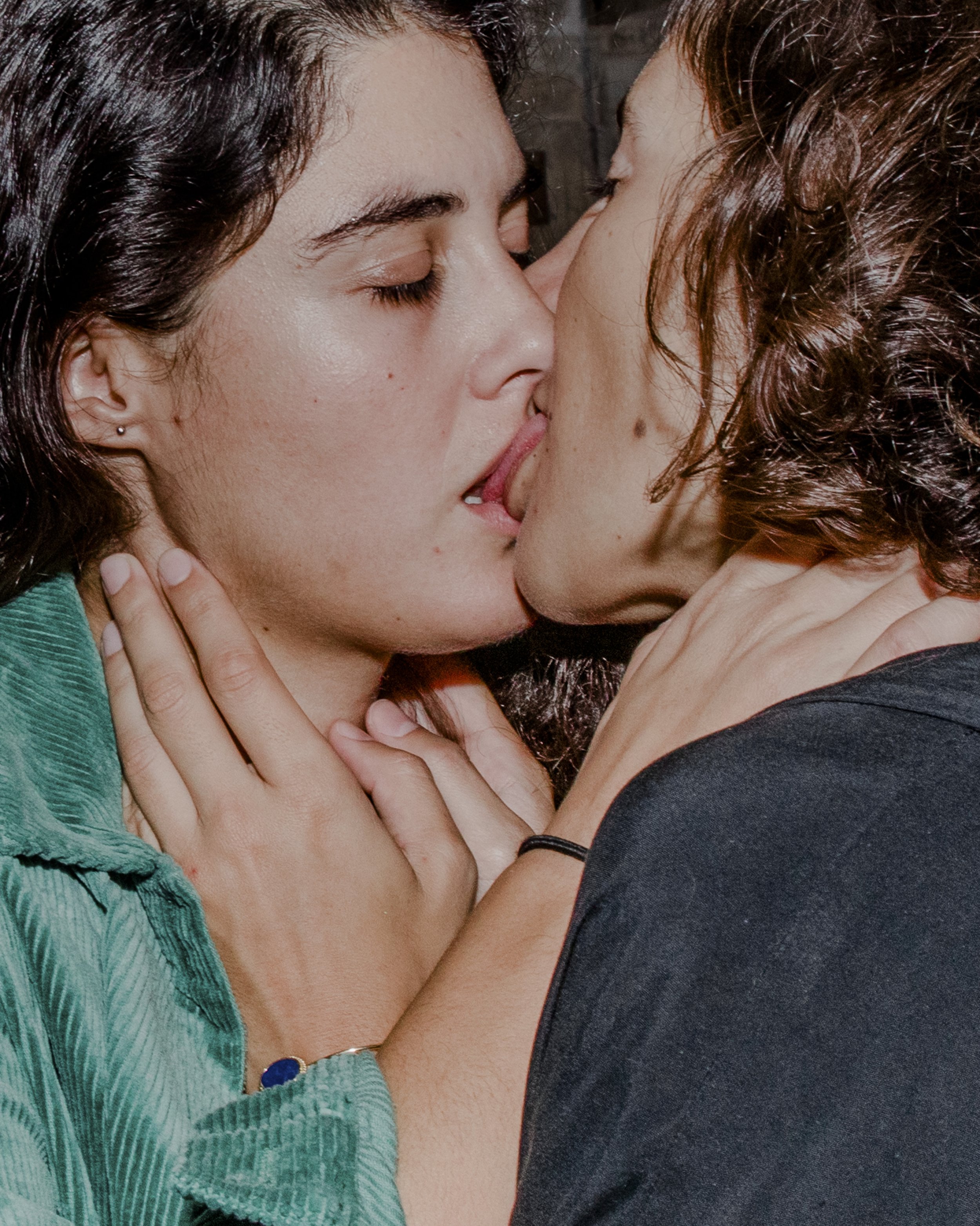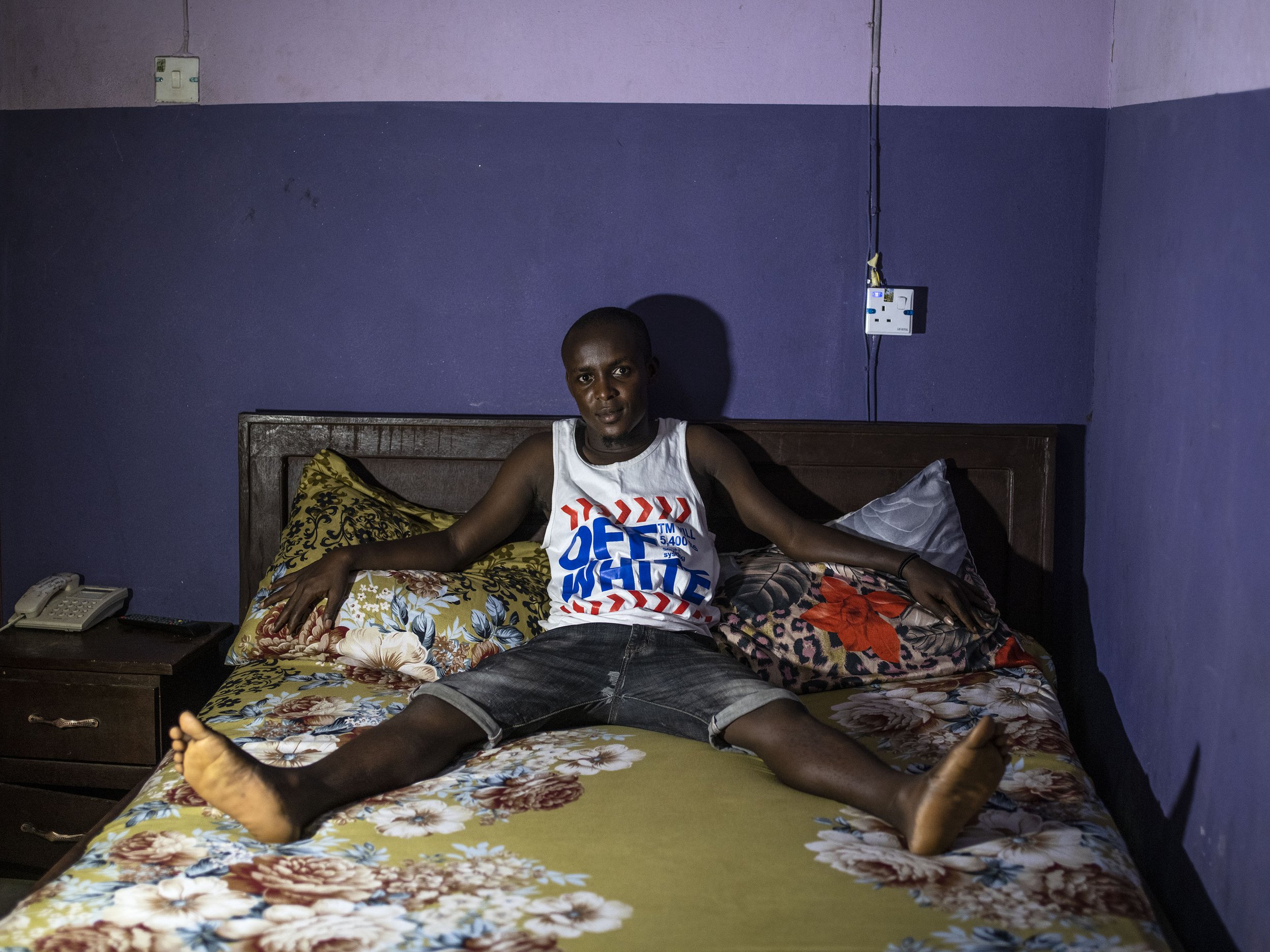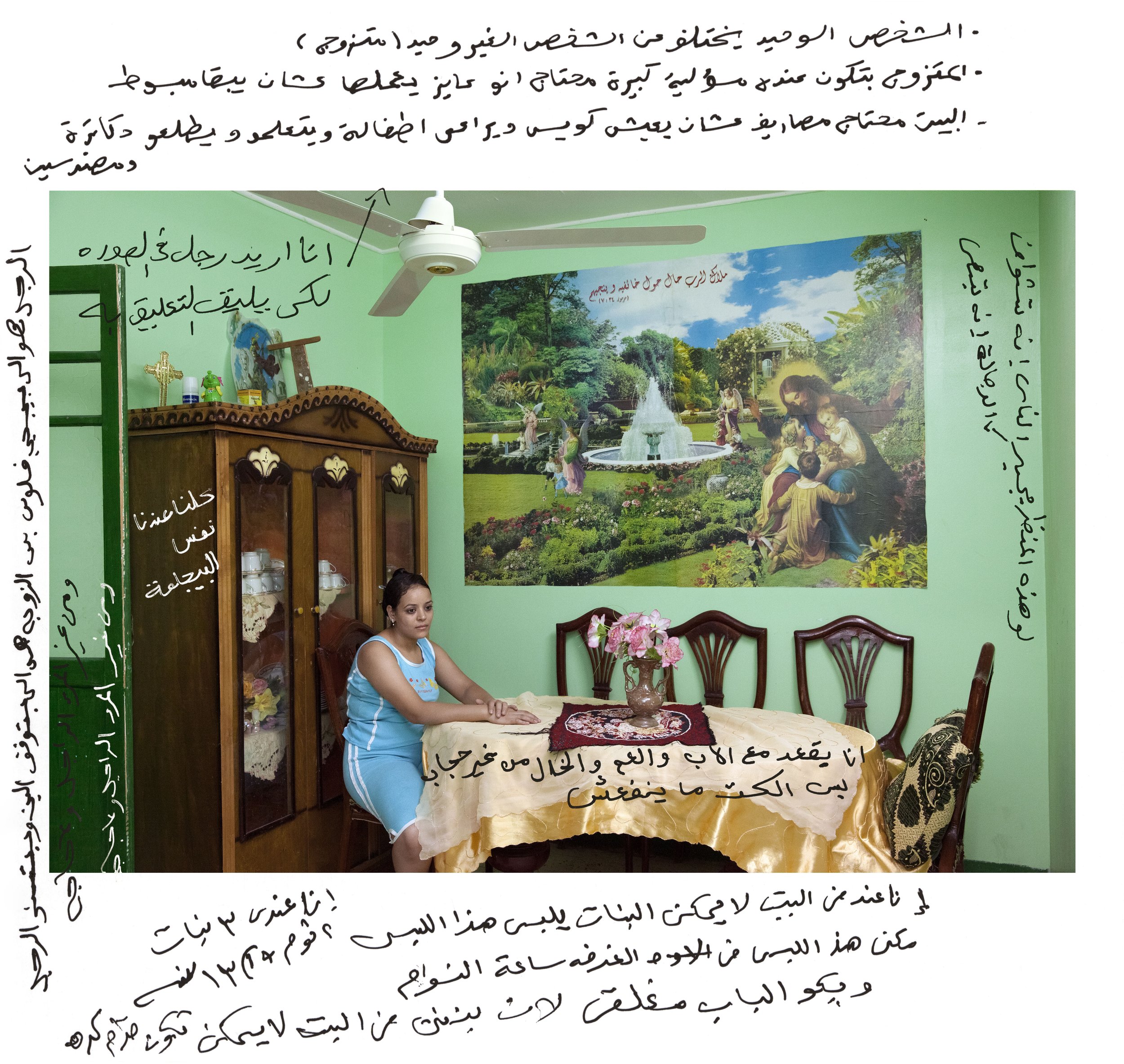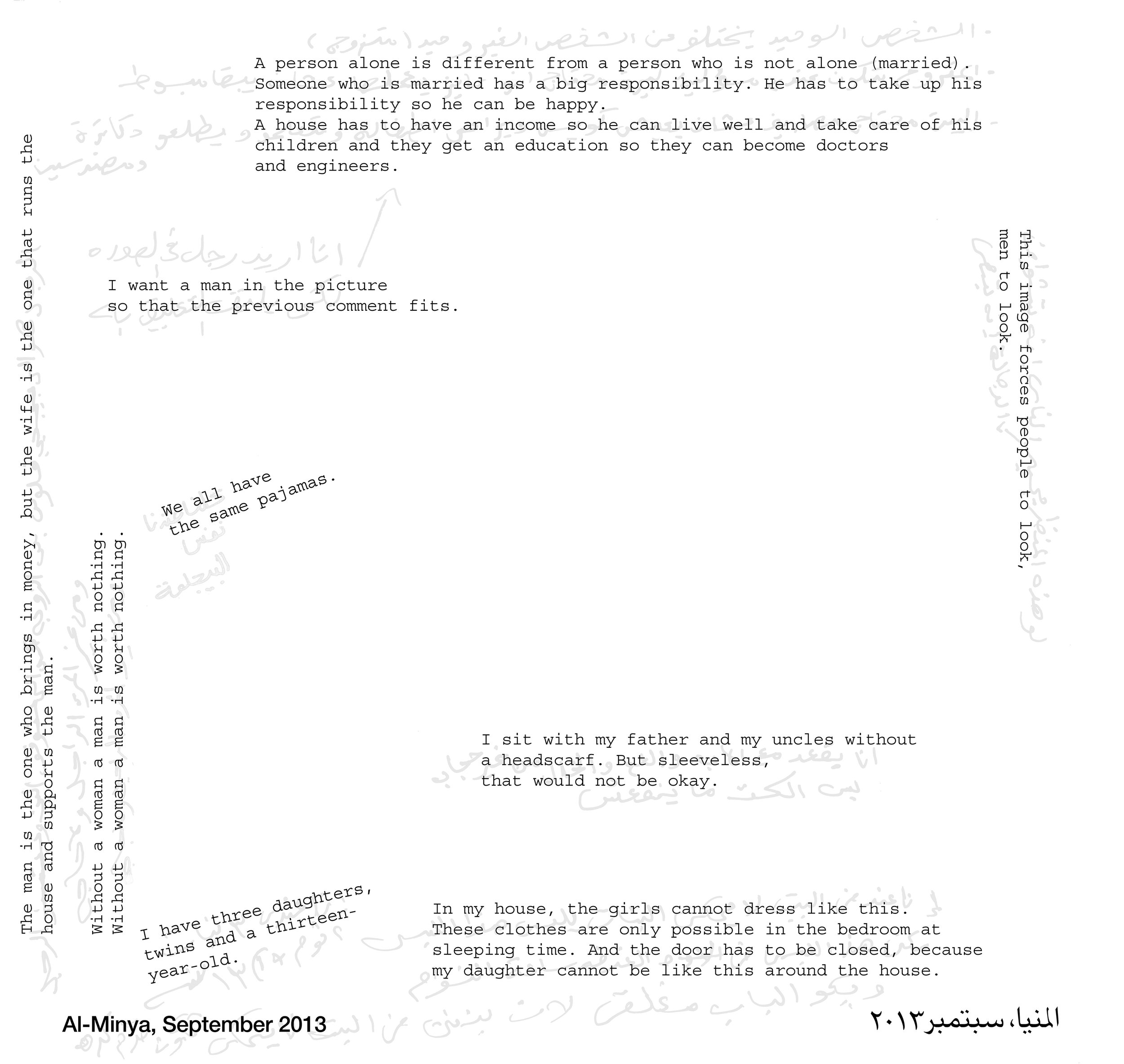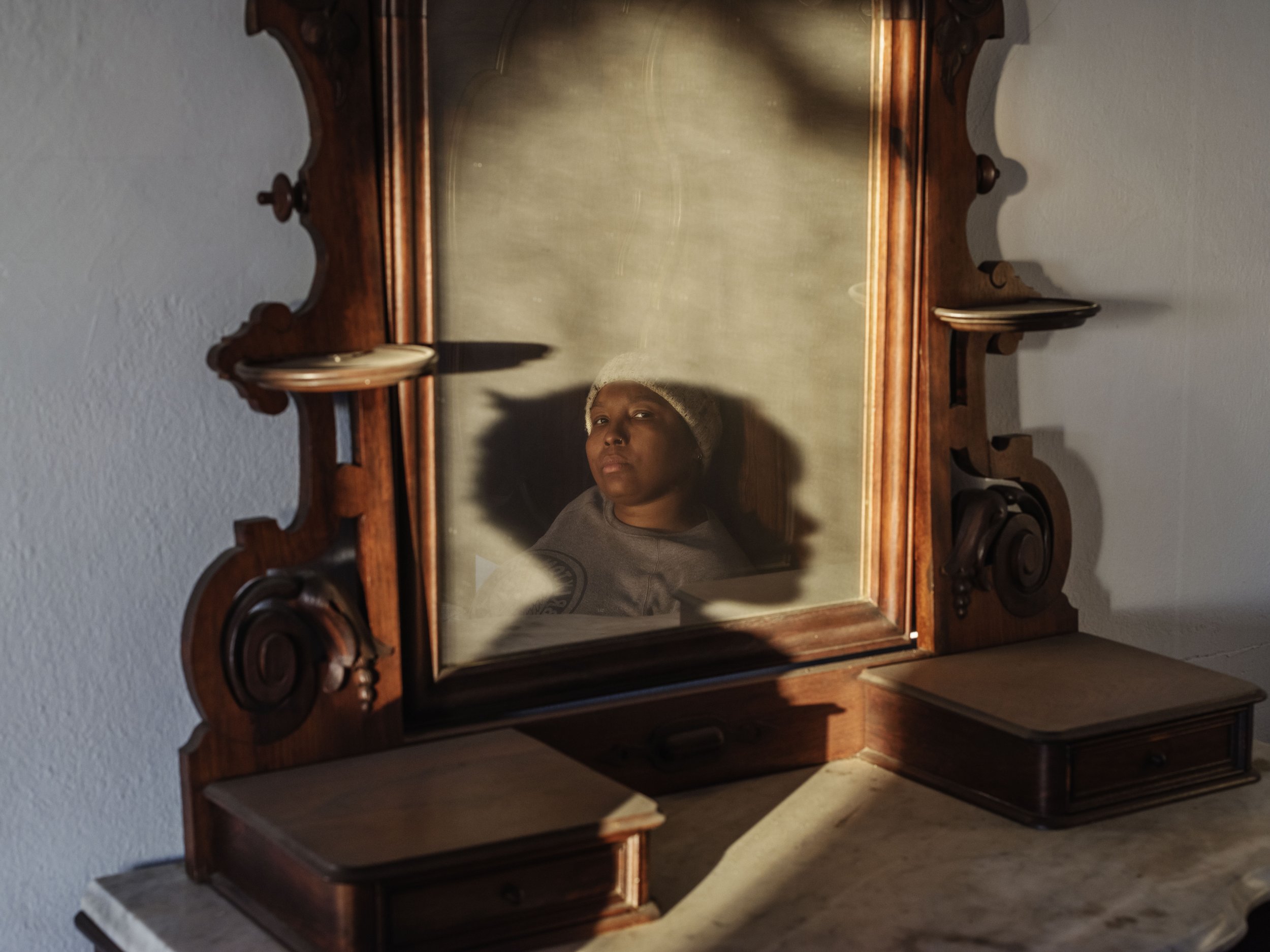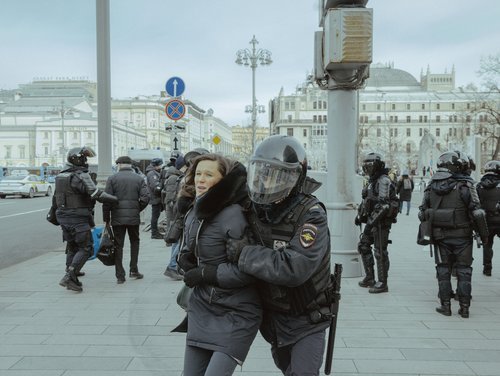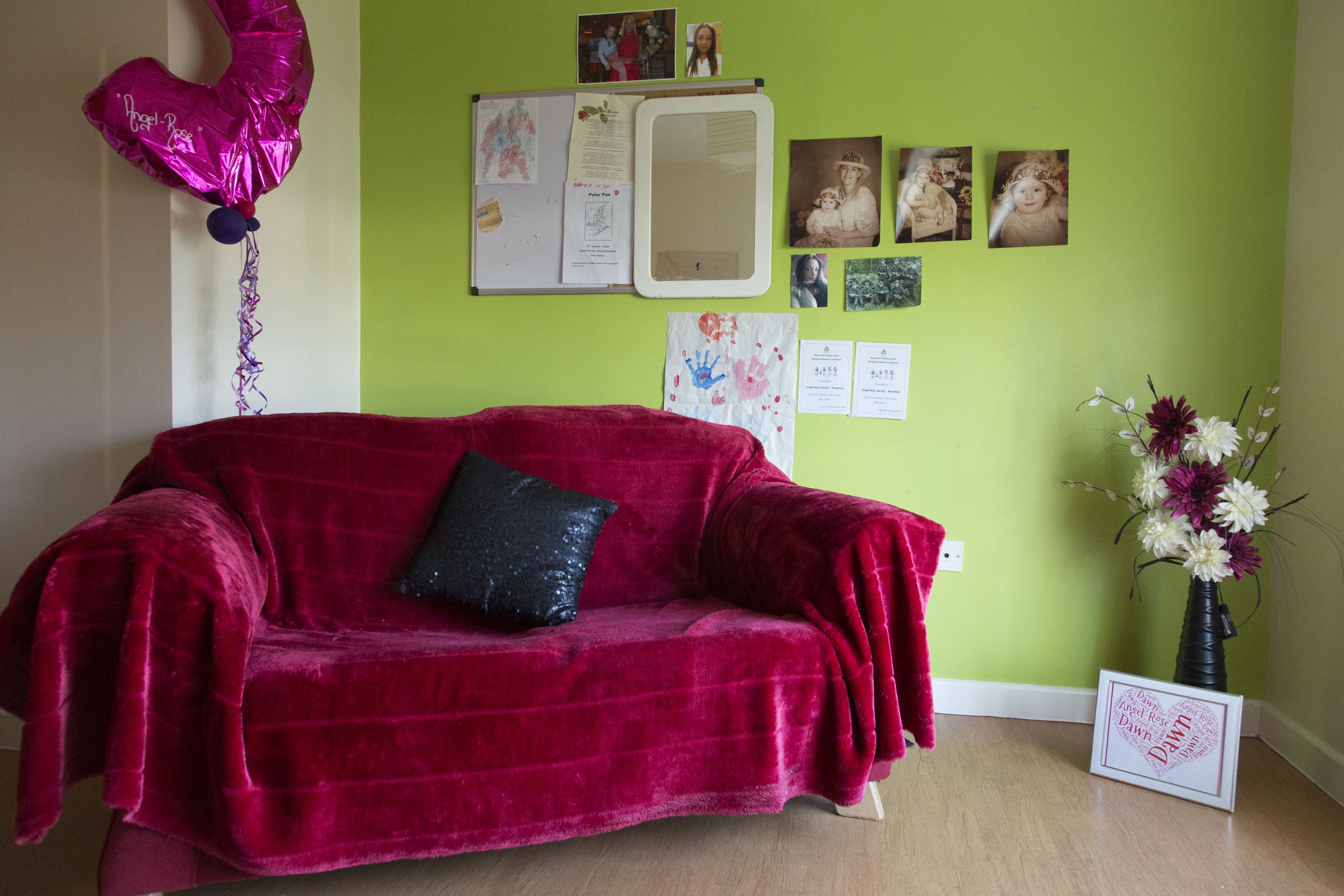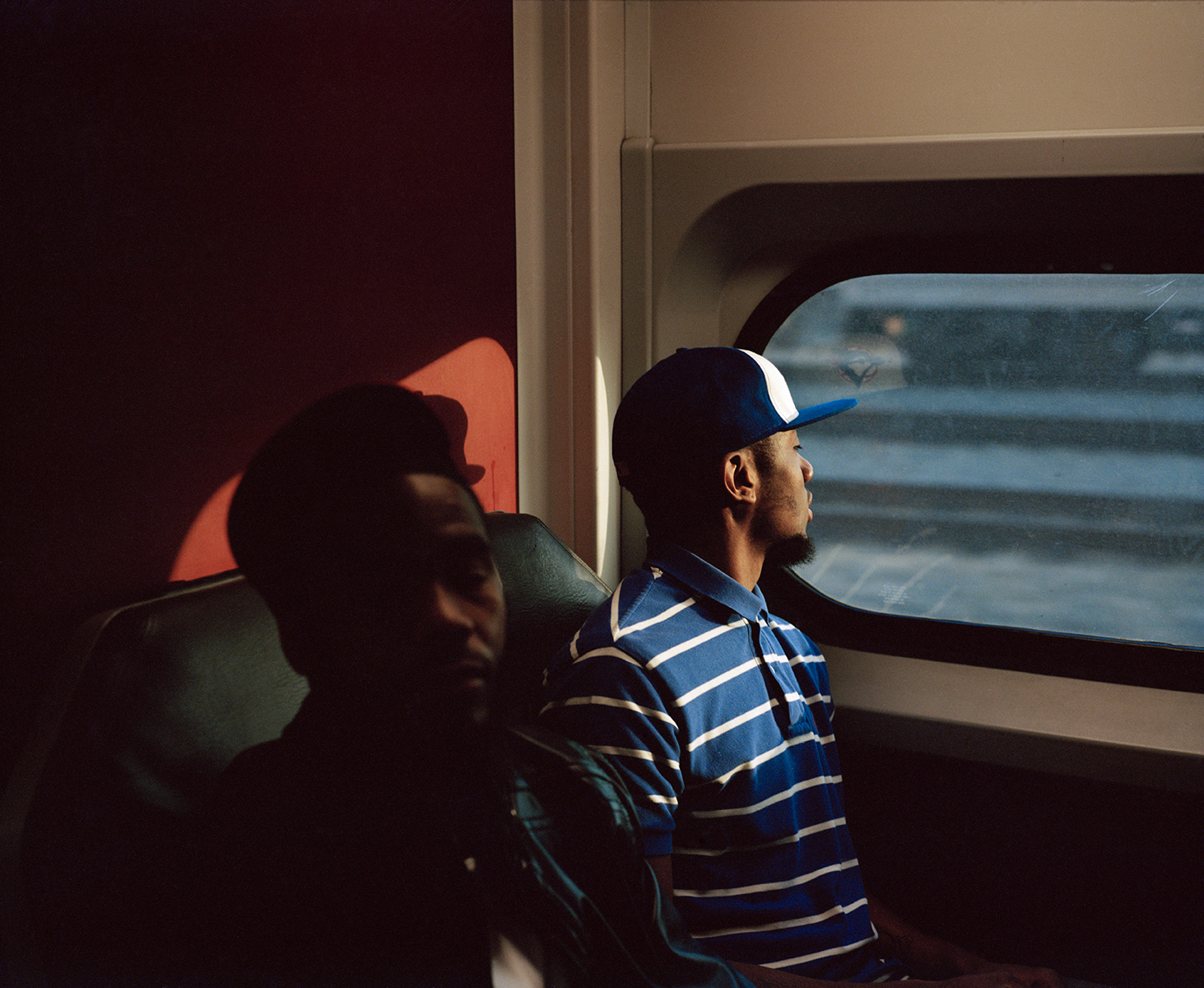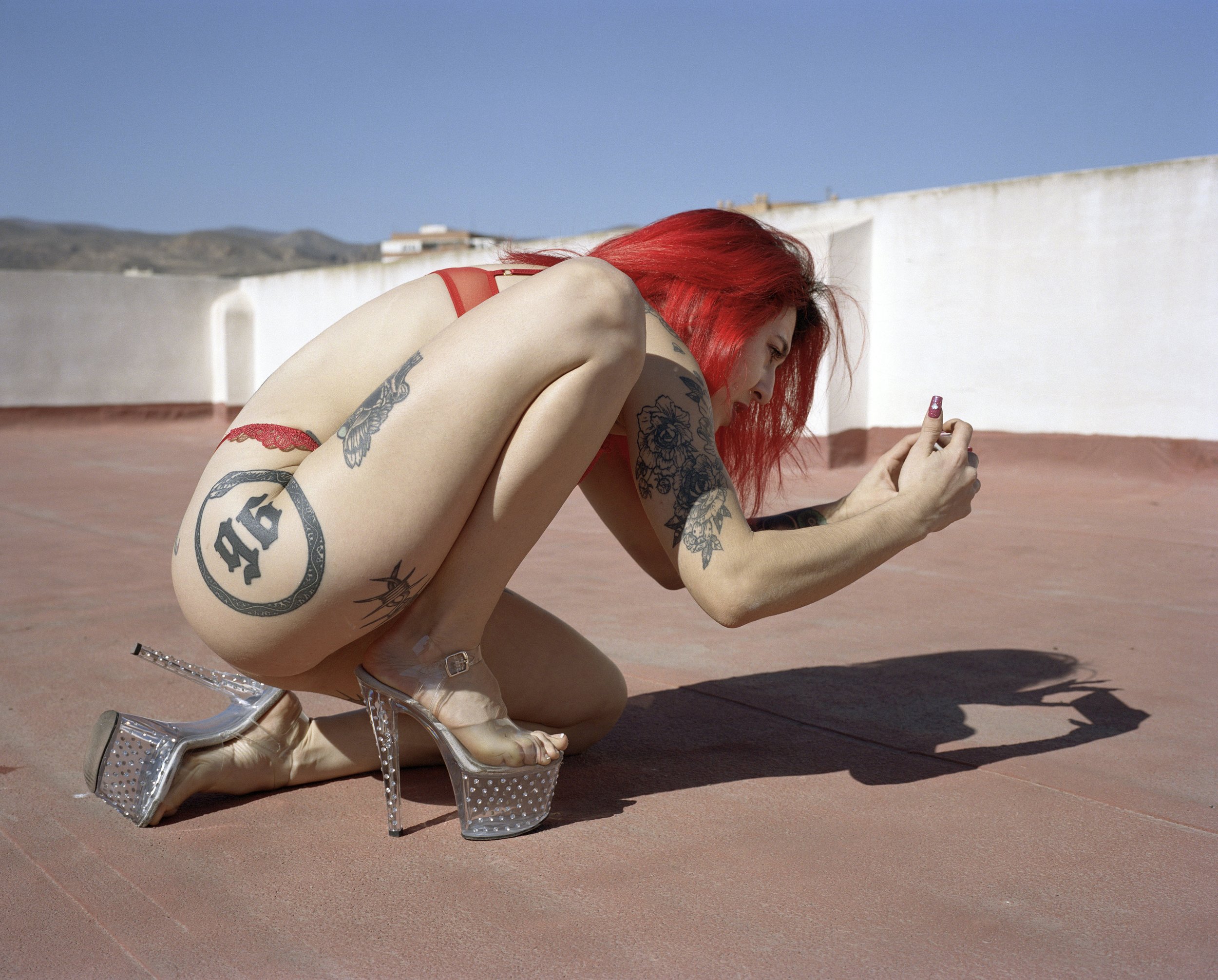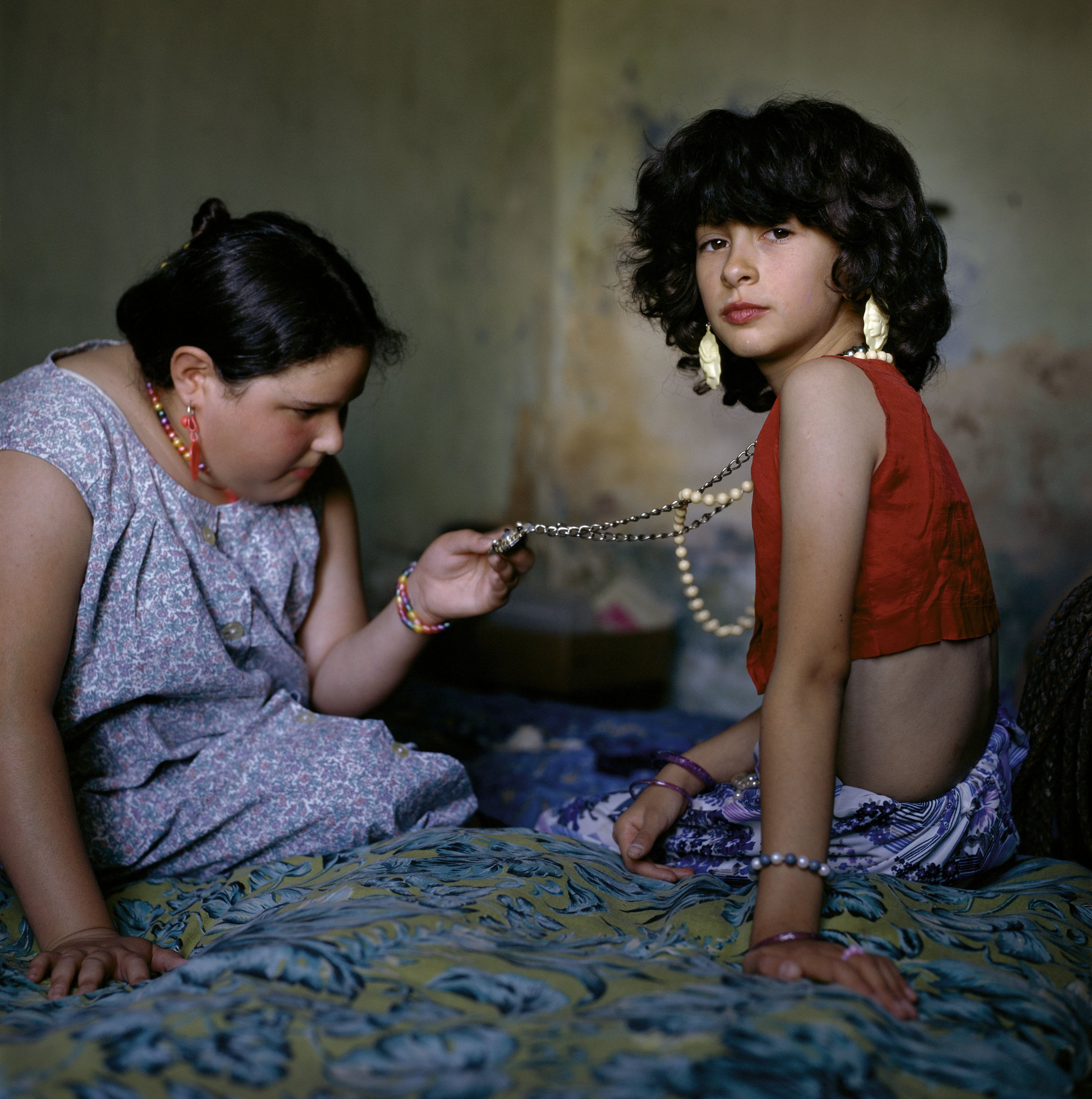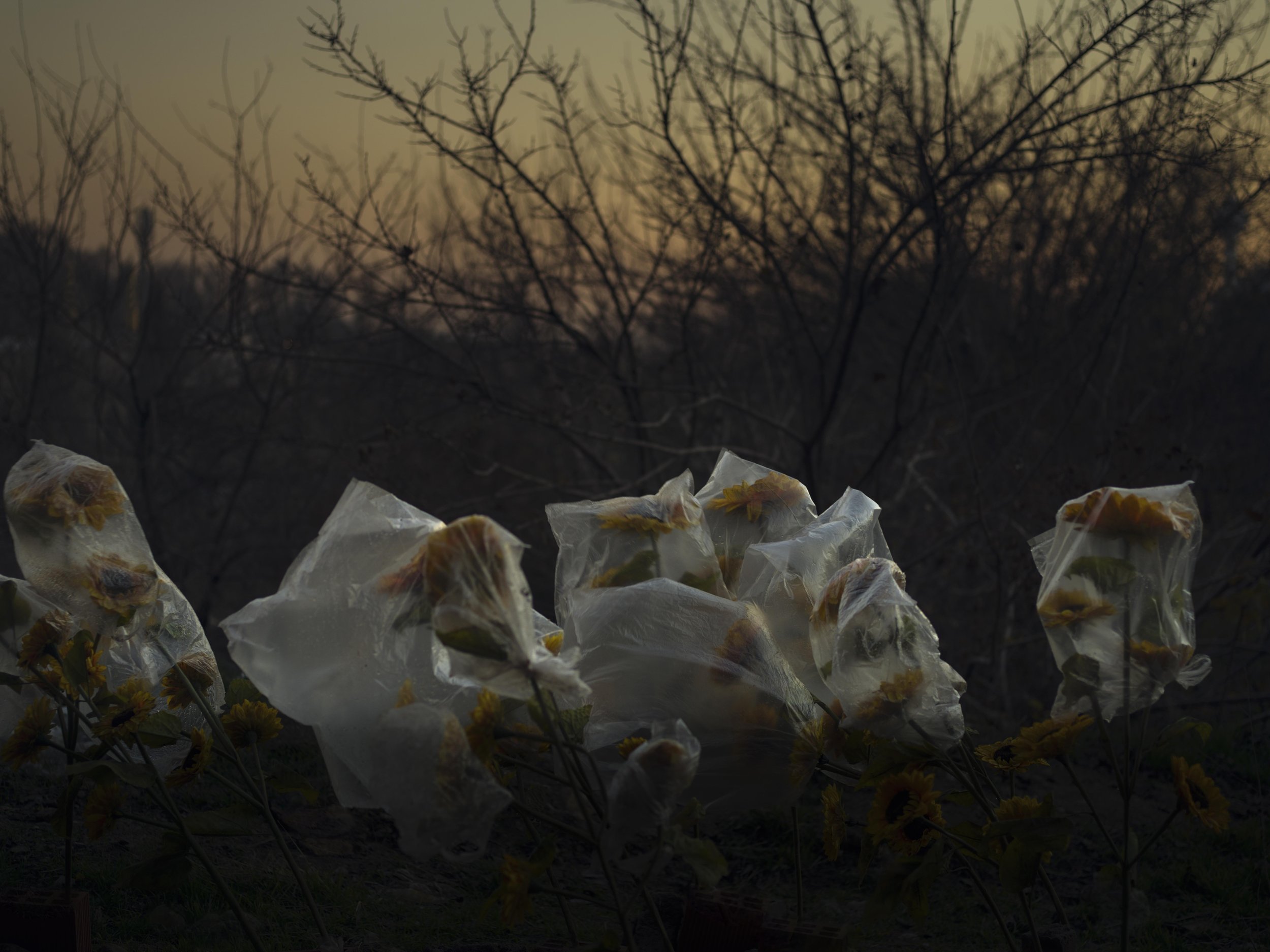
A plane files low over students riding a train at a funfair over the weekend. Istanbul, Turkey, 29 August 2018 © Sabiha Çimen/Magnum Photos
Close Enough -
12 women photographers of Magnum
“If your pictures aren’t good enough, you aren’t close enough.” - Robert Capa
Through these 12 projects, brought together by curator Charlotte Cotton under the title Close Enough, New Perspectives from 12 Women Photographers of Magnum, we can see that the photographers got as close their subject as possible. This "new perspective" redefines Capa's notion of Close Enough: from spatial proximity, we move on to human encounters. Thanks to the subjects unfolded on the walls of Hangar, we broach powerful themes that are in touch with the contemporary world, thanks to the close-up lenses of these talented photographers.
8 September — 16 December 2023
(UK, 1980), lives and works in London (UK).
Installation of photographs drawn from Olivia Arthur's archive, 2016-2022.
“This installation presents not one project but extracts from different bodies of work from recent years, all stemming from a fascination with the body that began for me when I was pregnant with my daughters. As my body "became a machine," doing this incredible task, I began to think about it in a way that I hadn't before, and in turn I began photographing people and their relationship to their own bodies.
-
I was looking to capture what it is that makes us feel comfortable in our own skin and how we express that. This quest has led me to make work with young people, about touch and the lack of it during the pandemic, about sexuality, and about physicality and intimacy in both private and public spaces. Most recently, my interests in technology and how it can be used to enhance our bodies or create physical connections over long distances have become part of this constellation of inquiries and ideas that have driven me. This installation is a mind map of all the directions I have so far gone, and it is a way for me to see how this could all potentially fit together as one extensive narrative and multifaceted journey. I am still working on understanding that and how an overarching focus on our bodily experiences may come together.”
(LB, 1992), lives and works in Beirut (LB).
Selection of work in Lebanon from 2012-22, spanning from Myriam Boulos's first photographs to her current and ongoing project.
“I am realizing more and more that photography is the answer to my failures. Before anything else, photography responds to my need to get closer to people, to understand what is real, and to be present. The act of taking photographs triggers intense moments of reality for me, and a way of literally putting a light onto what is silenced and obscured.
-
Photography can be an abuse of power, but we also need it to be an essential tool for telling our personal, collective, and local stories. I was born in Lebanon in 1992, soon after the end of a civil war that had lasted fifteen years. I grew up in a fragmented country where trauma was repressed and corruption was normalized. At the age of sixteen, I started to use a camera to question my environment. At first, I took pictures at night, when it seemed to me that Beirut's social web became apparent. At the beginning of Lebanon's 17 October Revolution in 2019, I started taking pictures during the day. It was the first time that we came together on the streets. It was the first time that we claimed our city and our country. The proximity between our bodies fascinated me. My friends and l used to take pictures of ourselves naked in the streets of Beirut. It was our way of reclaiming our streets and our bodies- everything that was supposed to be ours to claim. In the aftermath of the 2020 Port of Beirut explosion, I felt a responsibility to document its repercussions from a local point of view instead of having a Western photographer telling and controlling our story. In my work, we are the ones who own our bodies and stories and take back what belongs to us.”
(TR, 1986), lives and works between Istanbul and New York (TR/US).
Hâfiz, 2017-2020
Project created in a Turkish Koranic school for female students aged between eight and eighteen.
“The term Hâfiz and its grammatical feminine equivalent, Hafiza, are used to refer to someone who has memorized the whole text of the Quran. I see Hâfiz as an autobiographical project; its process gave me the chance to reanimate and explore what was forged within me in my own childhood.
-
My twin sister and I studied in a Quran school in Istanbul, like our elder sister before us, and the experience always stayed with me. I was curious about what had changed and what was the same for a different generation. One of my classmates almost twenty-five years ago had become the manager of the school, and she gave me my entry point into making this photographic project. I started by introducing myself to the students in the main prayer room of the school. I suspect that they all knew or sensed that I was looking for my younger self through them, and I think the girls were collaborating in order to help me see myself. I was struck by the girls who didn't seem to care about how they looked in comparison to the so-called beauty standards set by social media. It says something about their agency and the resolute rebelliousness of their generation, which I wanted to be resoundingly clear to the viewer of Hâfiz. The media has a very cartoonish way of portraying Muslim women, and as insiders- as Muslim women and girls- I hope we can change perception through true observations of our lives. I was constantly aware of the potential danger to these girls that my project provoked by putting the intensity of their relationships on show and by representing their realities and details of their lives. But I think the way I photograph is simultaneously open enough to bring insight and close enough to offer safety at such a distinct moment in their lives.”
(ES, 1975), lives and works in Alicante (ES).
Photographs and testimonials of ninety-nine men and one woman who responded to Cristina de Middel's open call for clients of sex workers to be photographed and interviewed, taken in Rio de Janeiro, Havana, Mexico City, Paris, Bangkok, Los Angeles, Lagos, Kabul, Amsterdam, and Mumbai from 2015 to 2022.
-
“In 2015, l put an ad in a newspaper in Rio de Janeiro, looking for clients of sex workers who were willing to pose for me in exchange for money. To my surprise, many men living in the city responded to this transactional invitation, and their portraits and interviews became the first chapter of Gentlemen's Club. Over the past seven years. I have traveled to ten cities that have links with the business of sex to make a total of one hundred portraits. Some of the cities are well-known for their sex tourism industry; in others the sex trade is romanticized, sanitized, or undisclosed. I asked the men about their first experience with a sex worker, and their motivations, feelings, and opinions about paying for sex. I have aimed for this project to be technically neutral and use a nonjudgmental methodology to redress the historical imbalances of the visual representation and narratives about sex work. But. of course, there are also my personal motivations that more deeply underpin and explain my photographic choices. I have actively sought out a process whereby I repeatedly enter into a precarious and highly sexually charged environment where I am constantly aware of my experiences as woman and a survivor of sexual abuse. Realizing my aims for Gentlemen's Club hinges upon my control and vigilance as a photographer in an intense situation, and my openness to seeing these men and bearing witness to their intimate testimonies.”
(BE, 1986), lives and works in Ghent (BE).
“I traveled to Egypt regularly from 2011 onwards, during key moments of the uprising. Each time, I tried to find trust in times of turmoil and suspicion, where private life is often shielded. I asked people I met by chance if I could spend the night at their homes. Women, their husbands, and their children would share their daily life, their food, and even their beds with me. I returned to the country seven times, but taking photographs became increasingly problematic — suspicion of outsiders has rapidly grown in the aftermath of the revolution.
Engagement is truly important to me, yet the consciousness of my status as an outsider — both culturally and as a photographer — started to grow. In 2016, I made the first dummy of my book, and during the process, I became very much aware of my role in the story. Was I just another Western visitor that had arrived to take pictures of the ‘other’?
-
I postponed the publication of the book and decided to return one last time to try and capture the complex nature of the region. I traveled the country, asking Egyptians whom I had not photographed, to write their views directly onto the images in my book dummy. The result is a written dialogue between Egyptians from diverse social, cultural and religious backgrounds. People who would never allow themselves to be photographed are therefore also included, and contrasting views on country, religion, society, and photography arise.”
(US, 1971), lives and works in San Francisco (US).
Knit Club, 2012-2020
Project made with residents of Water Valley, Mississippi,
-
“Prior to Knit Club, I had spent almost a decade working on projects away from the United States. I made a decision to come back and figure out how I could connect as an artist in my own country. I think my work with the women members of Knit Club is a defining moment in my shift toward collaboration and in my journey to address problems of representation. Like many artists, I struggle with and challenge the power balance between the author and the subject.
Being part of Knit Club and collaborating with the women in it allowed for the exploration of personal and collective questions about the concepts of womanhood and motherhood. I had willing collaborators who shared in the story-making and embraced the possibilities of what women can do when they are away from the control of the patriarchal system. Together, we chose locations and props and decided what to make. Some people would come help with the lights or carrying things or give advice, and then someone else would be in front of the camera. It would switch up each time we made a picture.”
(GE, 1994), lives and works in Moscow (RU).
War is Peace, 2021
Project made in Russia and currently occupied territories in Eastern Ukraine.
-
“The war in Ukraine is being fought with bullets and artillery, but it started years ago on Russian television. In this installation, I am piecing together a visual account of this point in time when the majority of Russians are living in an alternate reality, where the Russian army is portrayed as triumphant in its so-called "liberation" of the Donbas region and "demilitarization" of the "Fascist forces" in Ukraine. Since the invasion, Kremlin-backed channels of propaganda have become the dominant voices, with independent media outlets shut down and social media platforms blocked. The Soviet cult of fear and control is being embraced. Whoever reports critically or uses the words "war" and "invasion," or openly opposes the Kremlin, may face up to fifteen years' imprisonment. To quote George Orwell, "Power is in tearing human minds to pieces and putting them together again in new shapes of your own choosing." I was photographing the Russian invasion of Ukraine on February 24, 2022, when Russian tanks rolled into the separatist, Russian-backed Donetsk People's Republic. witnessed the last public protests against the brutal invasion in Moscow in the same month. I left my home in Moscow as chaos descended and journalists and human rights organizations faced overwhelming crackdowns. I have just returned to Russia, feeling the weight of having missed many months that I can never make up for. For now, I will stay here and try to create a visual account of what is happening around me.”
(US, 1948), lives and works in New York (US).
A Room of Their Own is a multilayered, visual story comprising photographs, videos, firsthand testimonies, and original artworks.
-
“It was created through a collaborative, participatory process between photographer Susan Meiselas, the community arts organization Multistory, an illustrator, and a writer, along with survivors of domestic abuse living in shelters in the Black Country, a postindustrial region in the West Midlands, United Kingdom.
At the start of every project, it is key for me to find something to follow or to immerse myself in. For A Room of Their Own, this connection happened in an unexpected visit. I walked into a women's refuge whose walls were decorated with art, and immediately felt it was comfortable and safe enough to welcome women, for as much or as little as they wanted to contribute. With Multistory we organized a series of workshops to bring women together. We invited a local illustrator, a writer, and a group of cooks with whom we first prepared soup. As we sat and chopped vegetables around tables, their stories slowly began to emerge. In the next mornings and afternoons, women came to the resource center from local shelters to write, draw, and map their life journeys from childhood to needing emergency protection, and then they progressively shared the process of establishing their new lives. One night after a workshop was ending, I dared to ask if I could see one woman's room. Though she invited me in I initially felt I was trespassing, shifting from the collective space to a personal place of retreat. I remember that as I entered, I felt the room as a mirror of her life. I sensed her presence, though by necessity she was absent. Even with permission, I of course avoided visually identifying any place or person in my photographs. But the real challenge is not just about making photographs that reflect human lives in an honest way, it's creating a project that can both engage and prompt us to ask ourselves what more we could do.”
(US, 1986), lives and works in Philadelphia (US).
City of Brotherly Love, 2009-2012
Series of photographs made on the streets of Philadelphia
-
“I made ‘City of Brotherly Love’ over ten years ago, as a young twenty-something who had grown up in suburban Colorado and just moved to live and work in Philadelphia. It was a transitional moment in my life and the moment when I first understood how to use my camera to gain consent to approach strangers and humanize complicated situations. As I commuted to and from work, up to five times a day I'd be thrown off guard by a man catcalling in my direction. The fact that I responded at all was a surprise to them, and I'd turn the conversation away from attraction and ask if I could photograph them. I think some who said yes to being photographed saw my invitation as a way to prolong the encounter, and I guess some liked the attention. Having men who looked like me express that they saw me as attractive was at the heart of this project. They helped me realize a beauty in myself, but the situation also really sucked - it was frustrating. Turning it into a photographic exchange helped me deal with it and pushed me to meet someone halfway and humanize what was happening. I would often bump into the men again around the city; some even became friends. I can see that ‘City of Brotherly Love’ is a project that is particular to me in a societal sense. I also learned that I am not a photographer who shoots a great deal, and I take my time and use my intuition to decide when to photograph I learned to carry my camera, let the catcall happen, and determine if I had entered one of those seamless moments where I could say: "Hi, can I take your picture?"”
(ES, 1986), lives and works in Spain.
Agony in the Garden, 2022
Project made in various cities across the Spanish territory in collaboration with young people involved in the Trap and Drill music scene.
-
“My work almost always starts with something that I am really close to. I listen to Trap and Drill music, observing how these cultural movements articulate the precarity of living through crisis after crisis combined with the euphoria of making everything in your own way and sharing it directly, without any censorship from intermediary platforms or global corporations. The "DNA" of this frenetic and raw expression-of hedonism versus nihilism, darkness versus joy, the glorification of wealth and banalization of violence is resonating globally for a reason. I wanted to pay attention to a scene that came from somewhere honest and responded to what was really going on, and to think about how it released all of this energy and on such a scale. If I'm documenting anything, it's the relationships I enter into with the people I photograph. I know that movements like Trap and Drill would have historically been labeled as a subculture by the media, photojournalism, and traditional documentary but it's important for me to be resistant to those conventions. I embrace the fact that my work comes from a primitive need for love and connection and try to transcend the anecdotal or pure testimonial. Photography and society can both be deeply contradictory; simultaneously erotic and violent, subtle and gentle. I believe that it's important to make images that have inherent contradictions and are open to interpretation, creating a space where you can see yourself.”
(US, 1968), lives and works in San Francisco (US).
A selection of photographs and video clips, published and unpublished, about her project Guille and Belinda.
-
“I first met Guille and Belinda in 1998, while working on a project on farm animals on and near my family's farm in Argentina, three hours south of Buenos Aires. They were nine years old, and | was twenty-eight. They were raised on neighboring farms and would spend much of their summer days at the home of their grandmother Juana, whom I would often visit to drink mate and chat and to photograph her animals. At first, Guille and Belinda would get between the camera and the animals I was photographing, and I would shoot them away. They were so joyful, they lived their own adventures. Little by little, I let them stay, and this work was born, continuing to this day, twenty-four years later. Working long-term with people you love is an incredible thing. I had to learn how all three of us were changing over time and to recognize the pictures that were truly our own.”
-
“ For The Sake of Calmness is perhaps my most personal project to date. One winter morning in 2016, I was sitting in my home and enduring premenstrual syndrome while I faced toward Mount Damavand, the highest volcanic peak in Iran. I realized that in front of me was a glorious albeit inactive volcano that held this unending possibility that it might erupt at any moment. I was starting to work out how to visualize the deep bodily intensity of PMS in an abstract way. The film is about the state of PMS, but it is equally an analogy of the state of a country. When you have PMS, there is no filter between you, your body, and the rest of the world. You develop a heightened sixth sense. I interviewed over one hundred women who have PMS about how they saw the world. I then started to write a narration where my voice, the accounts of the women, and the imagined "voice" of the mountain all come together. I shot the video in 2019, when the order of the world was drastically different from now. The last time that I saw my father was when he and my mother were sitting in front of my camera. I am glad that the last visual image I captured of my dad was video and not still images because in film there is that enduring anticipation that you are about to see the next frame. It is as if a slice of life, something impossible to verbalize, is held in these sequences.”

